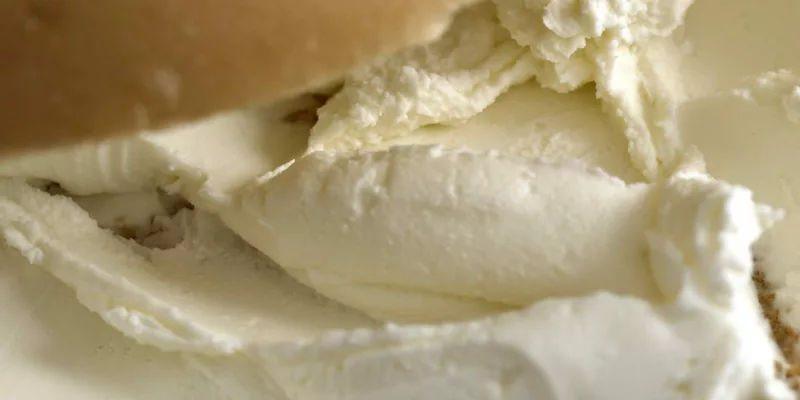
Locust Bean Gum (LBG) (410) used for thickening and stabilising. LBG requires heat to fully activate. It has synergies with other hydrocolloids like carrageenan and xanthan where it forms unique gel textures.
Application
| Application | Function |
|---|---|
| Ice Cream | Ice crystal and Viscosity control. Fat mimetic. |
| Cream cheese | Speeds up coagulation, Improved moisture binding and texture. |
| Baked goods | Improved yield and extension of shelf life. |
| Pastry fillings | Viscosity and syneresis control. |
| Soups, sauces and marinades | Viscosity control. |
| Meringues | Stabilisation and syneresis prevention. |
Chemistry
Locust bean Gum (LBG) (E410) is a polysaccharide (a long chain made of sugars) comprised of galactose and mannose units.
Some other familiar polysaccharides are starch and cellulose, which are made of long chains of the sugar glucose.
Properties
Dispersions of Locust Bean Gum are relatively stable to acid and electrolytes, however they are unstable to retorting and freezing. The addition of 10-20% w/w sugar gives much better stability during retorting. Similarly, the addition of 10-20% w/w sugar alters the appearance of the frozen and thawed material from a spongy gel to a long, semi-gelled material with no syneresis.
Although under normal circumstances, Locust Bean Gum does not gel by itself, it imparts elasticity to agar and Kappa carrageenan gels and will form a gel when mixed with Xanthan gum.
